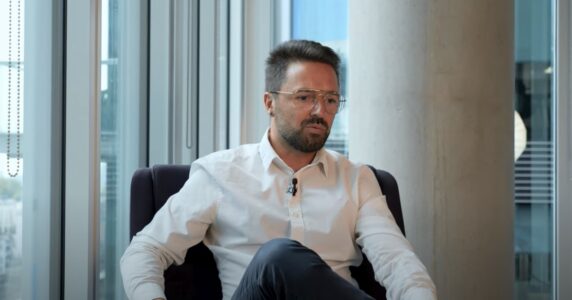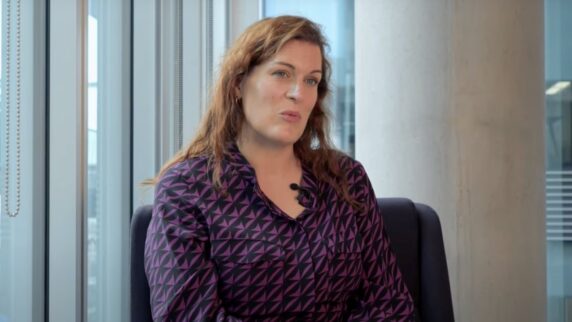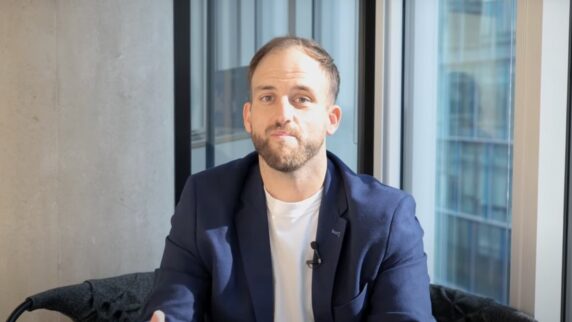How KMS Lighthouse Played a Key Role in Tele2’s Digital Transformation
Russian telecom companies face a lot of challenges. One is in the area of government-regulated tariffs which are determined each year by the country’s Federal Tariff Service. In 2019, one of Russia’s leading telecom operators, Tele2, was in the middle of launching its KMS Lighthouse system when a new rate regulation occurred.
In a conversation with Dmitry Popov, Director of Technology Development at Tele2, Aleksander Tarasove, Managing Partner at business solutions company DIS Group (which participated in the solution’s Implementation) asked Popov about the role KMS Lighthouse has played in Tele2’s digital transformation success and it’s receiving a global CIO project of the year award.
You can’t have a full-fledged digital transformation without acknowledging knowledge management. Why do you think it’s important to manage knowledge, and why is it important for digital and telecom companies?
Well, knowledge management is really key in any company. One of Tele2’s main objectives in implement KMS Lighthouse was to increase business efficiency through consolidation and distribution of knowledge among our people and partners. To improve customer service, we launched a global CIO award-winning system with the goal of concentrating knowledge in a linear system, developing, updating, and distributing it among our service reps and partners to provide support at the point of sale and service.
In the past, dedicated documentation departments handled this function, but the KMS solution allows this work to be done by any of our organization’s users, each of whom possess unique knowledge. That means headquarters, offsite technicians, partners, and customers all have real-time access to the same knowledge.
What are some of the biggest benefits you’ve realized with KMS Lighthouse?
When you talk about knowledge, the key thing is content. When it comes to vast quantities of data, the biggest challenge is in establishing an efficient process for data collection, structuring, and regular updates. A key feature Tele2 implemented while building our service was automated updates of tariff plan structured parameters. This means today we can be sure that once a tariff plan is modified all the parameters will be automatically updated in our KMS.
These parameter updates used to require substantial hours of manual work in each region. Now we’re able to update using templates in KMS Lighthouse and distribute it across all our regions. And we can do it up to five times faster than before. Where it once took up to five hours to add 60-plus articles describing a product for each region, today it’s accomplished in an hour.
You have mentioned in the past the ingredients for success when launching new digital transformation projects.
Yes, first and foremost it’s technology; user support and internal processes changes that must be completed before a new system is launched. A kind of procedural work, if you will, inside the company in order to benefit from a new system. Because in the end, the system is supposed to make life easier, not slow down the adoption process.
At Tele2, we did our best to implement a large number of complex algorithms to enable automated tax recognition. Unfortunately, our 10-year traditions were stronger than any modern algorithm. Still, we’ve been able to automate this process as much as possible.
The features you’ve described can’t be implemented in a stand-alone system. I’m sure your system is integrated into some architecture with other subsystems. Can you tell me more about it?
Crucial KMS integration for us is in the subscriber service systems. For instance, Tele2’s KMS is integrated with its CRM system for dealers and the product catalog so everyone has the information they need. On the other hand, it’s important to integrate the system in a way to easily get updates. Working with our partners we find ways to structure information, including when rules and regulations change. This was especially helpful when, during the launch, a new rate regulation required all telecom companies to globally adjust their tariff plans, even if the price for end-users remained the same.
Do you use the customer self-service system?
Yes, of course! The system allows for customized key parameters to be displayed right in the search field. The result is that because customers are able to access information more quickly, our call center agents spend less time on resolving issues. Usually our customers find enough relevant information that they don’t have to talk to an agent. But if they need expert advice, that’s available to them as well.
KMS Lighthouse is an AI-fueled knowledge management solution that helps organizations around the world centralize knowledge company-wide, provide exceptional customer service, and enhance the employee experience. We’re constantly finding new and innovative ways to illuminate our clients’ path through knowledge management.




